
The common crane, also known as the Eurasian crane, is a bird of the family Gruidae, the cranes. A medium-sized species, it is the only crane commonly found in Europe besides the demoiselle crane and the Siberian crane that only are regular in the far eastern part of the continent. Along with the sandhill crane, demoiselle crane and the brolga, it is one of only four crane species not currently classified as threatened with extinction or conservation dependent on the species level. Despite the species' large numbers, local extinctions and extirpations have taken place in part of its range, and an ongoing reintroduction project is underway in the United Kingdom.

The whooping crane is an endangered crane species, native to North America, named for its “whooping” calls. Along with the sandhill crane, it is one of only two crane species native to North America, and it is also the tallest North American bird species. The whooping crane's lifespan is estimated to be 22-24 years in the wild. After being pushed to the brink of extinction, due to unregulated hunting and loss of habitat, and just 21 wild cranes remaining by 1941, conservation efforts would lead to a partial recovery. The total number of cranes in the surviving migratory population, plus three reintroduced flocks and in-captivity, only slightly exceeds 800 birds as of 2020.

Caohai Lake is a natural water-body situated in Northwest Guizhou Province of southwest China. The lake is situated on Weining Mountain, in the outskirts of Weining County. Caohai Village lies directly at the edge of the wetland.

Nal Sarovar Bird Sanctuary, consisting primarily of a 120.82-square-kilometre (46.65 sq mi) lake and ambient marshes, is situated about 64 km to the west of Ahmedabad near Sanand Village, in the Indian state of Gujarat. Mainly inhabited by migratory birds in winter and spring, it is the largest wetland bird sanctuary in Gujarat, and one of the largest in India. It was declared a bird sanctuary in April 1969.

Lake Perris is an artificial lake completed in 1973. It is the southern terminus of the California State Water Project, situated in a mountain-rimmed valley between Moreno Valley and Perris, in what is now the Lake Perris State Recreation Area. The park offers a variety of recreational activities. Because of this and the lake's proximity to major population centers, it is very crowded during the summer months.
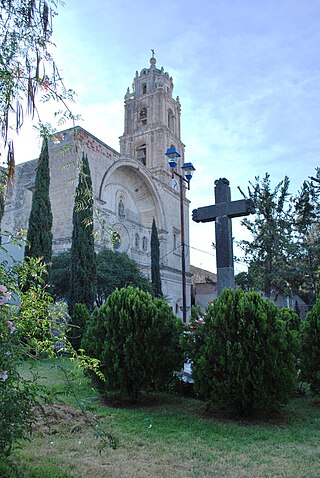
Zumpango is a municipality located to northeastern part of the state of Mexico in Zumpango Region. It lies directly north of the Mexico City within the Greater Mexico City urban area. The city of Zumpango lies near Lake Zumpango, the last of the five interconnected lakes which covered much of the Valley of Mexico in the pre Hispanic period. The name Zumpango is derived from the Nahuatl word “Tzompanco” which means string of scalps.

The Rural Municipality of Blaine Lake No. 434 is a rural municipality (RM) in the Canadian province of Saskatchewan within Census Division No. 16 and SARM Division No. 5. The RM extends east to the North Saskatchewan River and north to the village of Marcelin.
Tornos is a municipality located in the province of Teruel, Aragon, Spain. According to the 2004 census (INE), the municipality has a population of 239 inhabitants.

Cubel is a municipality located in the province of Zaragoza, Aragon, Spain. According to the 2004 census (INE), the municipality has a population of 198 inhabitants.
Las Cuerlas is a municipality located in the province of Zaragoza, Aragon, Spain. According to the 2004 census (INE), the municipality has a population of 95 inhabitants.
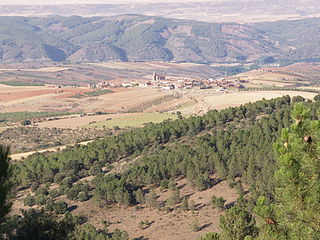
Orcajo is a municipality located in the province of Zaragoza, Aragon, Spain. According to the 2004 census (INE), the municipality has a population of 39 inhabitants.

The Gallocanta Lake is an endorheic lake in Aragon, Spain. It is located between the Teruel and Zaragoza provinces. The lake is located just to the south of Gallocanta village, between the Aragonese comarcas of Campo de Daroca and Comarca del Jiloca. This lake is situated on a high continental plain at an altitude of almost 1,000 m.
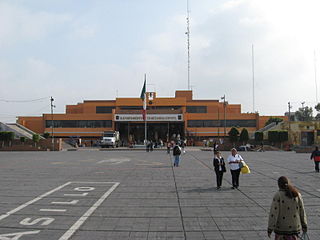
Nezahualcóyotl, or more commonly Neza, is a city and municipal seat of the municipality of Nezahualcóyotl in Mexico. It is located in the state of Mexico, adjacent to the east side of Mexico City. The municipality comprises its own intrastate region, Region IX.
Bello is a municipality located in the province of Teruel, Aragon, Spain. According to the 2003 census (INE), the municipality has a population of 369 inhabitants.
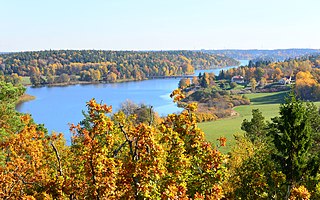
Orlången is a lake in central Huddinge Municipality, just south of Stockholm, Sweden.

Almolya del Río is a town and municipality located in the State of Mexico 26 km from the state capital of Toluca. It is located 2,600 meters above sea level. The name Almoloya comes from the Nahuatl phrase almoloyán which means place where water flows out. "del Rio" means "of the river" in Spanish and refers to the Lerma River, which originates here.

Catemaco Municipality is a municipality in the Mexican state of Veracruz. It is located in the state's Los Tuxtlas region. The municipal seat is the city of Catemaco.
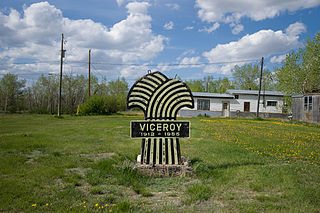
The Rural Municipality of Excel No. 71 is a rural municipality (RM) in the Canadian province of Saskatchewan within Census Division No. 3 and SARM Division No. 2. It is located in the south-central portion of the province.
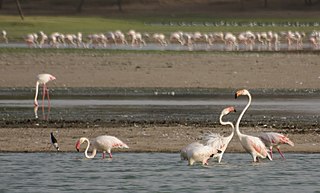
Thol Lake is an artificial lake near Thol village in Kadi in Mehsana District in the Indian state of Gujarat. A fresh water lake surrounded by marshes, it was built as an irrigation tank in 1912. Declared the Thol Bird Sanctuary in 1988, it is a habitat to 150 species of birds, about 60% of them waterbirds. Many migratory birds nest and breed in the lake and its periphery. The two most prominent species of birds recorded in the sanctuary are flamingoes and sarus crane. The sanctuary is also proposed to be declared an Eco-Sensitive Zone, conforming to the Environment (Protection) Act, 1986, for which draft notification has been prepared.
Last Mountain Lake Bird Sanctuary is a National Historic Site of Canada, located in the rural municipality of Last Mountain Valley No. 250 in Saskatchewan. The migratory bird sanctuary was the first established in North America. The 47.36 km2 (18.29 sq mi) area is within the Last Mountain Lake National Wildlife Area, an International Biological Program site, and includes adjacent uplands.





















